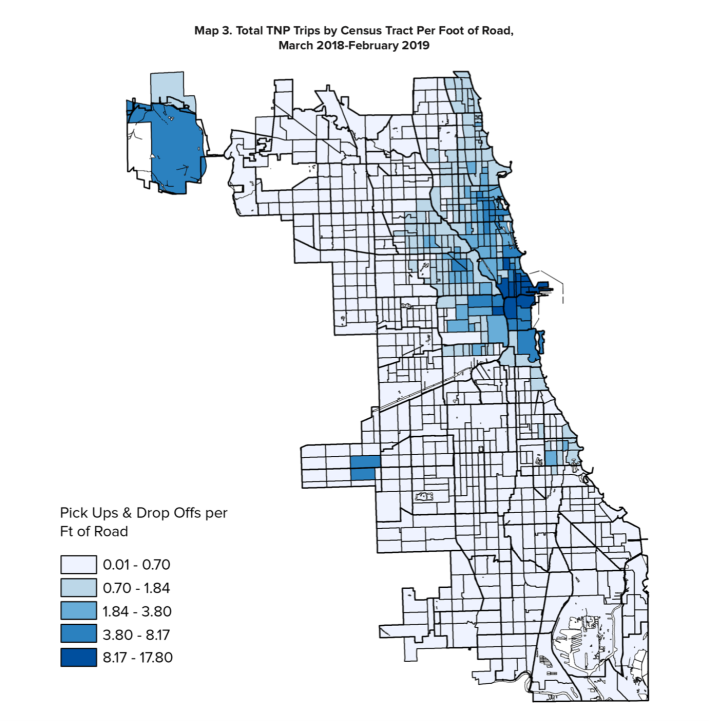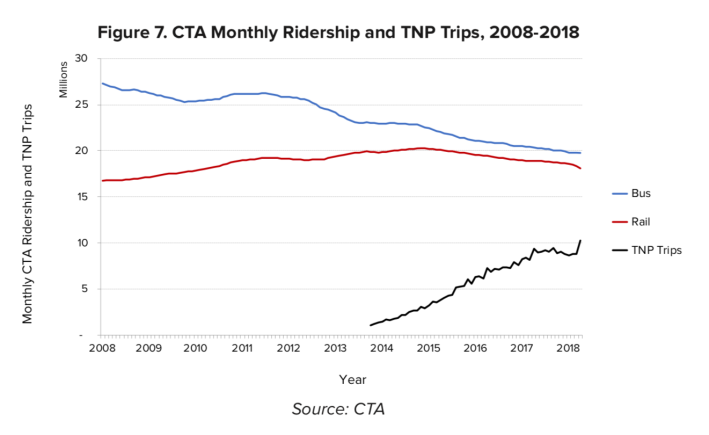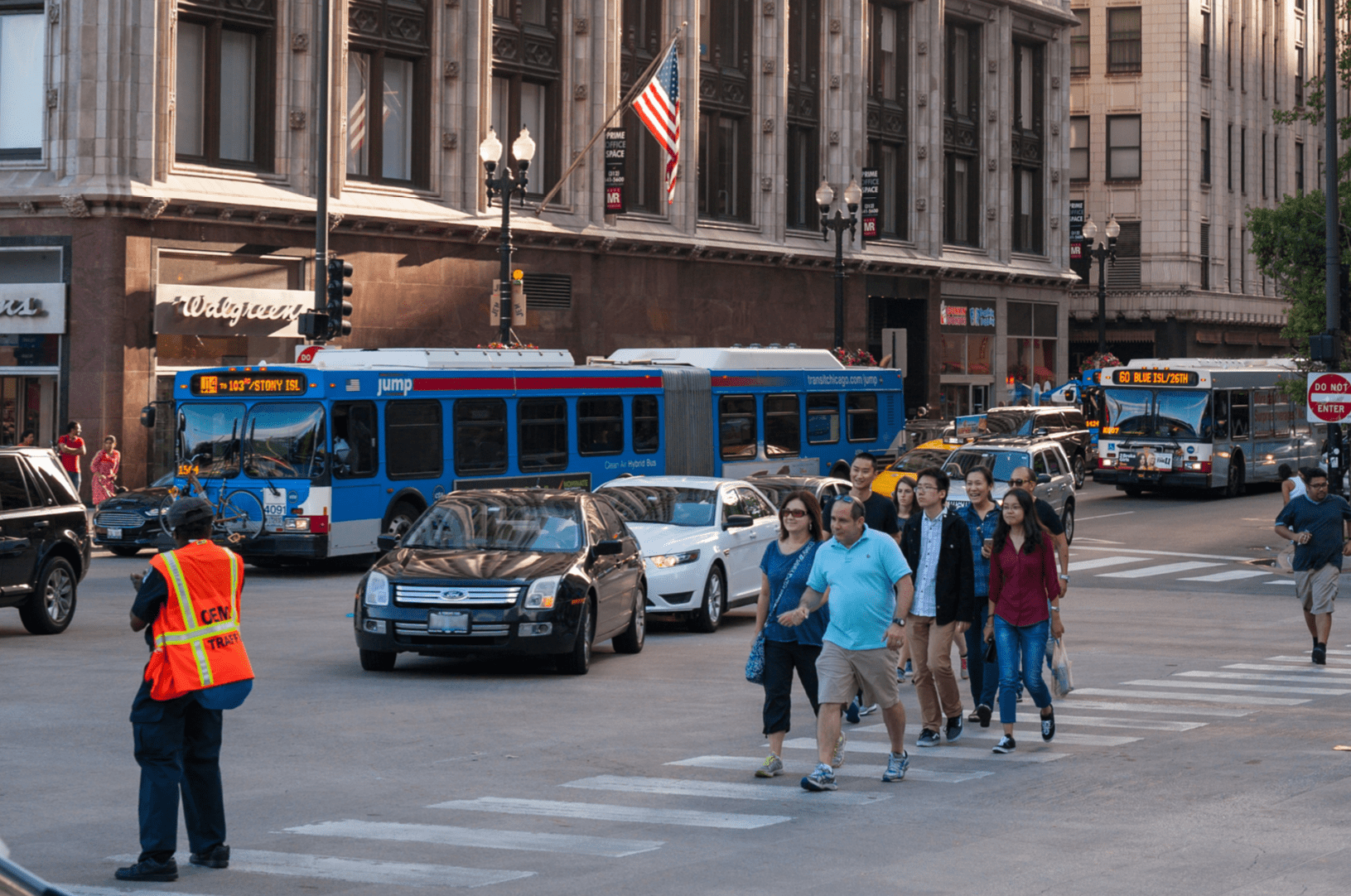Last week, Mayor Lori Lightfoot released her plan to increase city fees for solo ride-hailing trips citywide, with additional fees in the downtown area during peak traffic times. Meanwhile, the cost of shared trips would be lowered a bit. This is part of a larger plan to tackle congestion on our city streets.
The report that accompanied the announcement, “Transportation Network Providers (TNPs) and Congestion in the City of Chicago,” provides context about the impact of ride-hailing and the plan to address its negative impacts.
Between 2015 and 2018, the annual number of ride-hail trips in Chicago grew by 271 percent and the miles traveled by passengers increased by 344 percent. The study found that half of all trips citywide begin or end downtown, and nearly a third of those trips both start and end in the downtown area.
Furthermore, the report recommends that the city partner with an independent industry expert to conduct a comprehensive congestion pricing study to analyze the impact of traffic jams on every Chicago community.
One particularly troubling data point discussed in the new report is that 40 percent of ride-hailing vehicle miles driven are "deadheading," drivers cruising around in search of passengers or driving to pick up a passenger.
In addition to worsening congestion, ride-hailing has other significant negative impacts on our city. More traffic puts more wear and tear on our roads, and repaving them currently costs the city $1 million per mile. Transportation accounts for 25 percent of Chicago’s greenhouse gas emissions and ride-hailing companies are contributing to an increase. The growing popularity of ride-hailing is also having a negative impact on public transportation. A 2018 CTA ridership survey indicated that 48 percent of ride-hailing customers would have taken the CTA if TNPs did not exist.

A section of the report focuses on the impact of ride-hailing on downtown. One particularly stunning data point is that 77 percent of downtown trips are requested as private rides, which often have only one passenger, further amplifying their impact. Shared trips like Uber Pool and Lyft Line are more likely to be requested outside of downtown, particularly in areas starting or ending in lower-income neighborhoods on the South or West sides. This further underscores the fact that wealthier Chicagoans are the ones more likely to use ride-hailing, particularly for private trips.
The impact of ride-hailing services downtown region is also staggering. On an average morning rush period downtown, 8,132 ride-hailing drivers complete 25,807 passenger trips, with even higher numbers for the evening rush.
CTA ridership loss corresponds with areas of high ride-hailing ridership, and community areas where the most ride-hailing trips occur are also areas that have seen significant CTA ridership loss. Since 2015, there have been 48 million fewer CTA rides taken annually.

Policy recommendations meant to address ride-hailing’s impacts include impose a ground transportation tax on vehicles for hire in Chicago, pushing for policies that increase the frequency of shared trips, and incentivizing more riders to take public transit. Higher fees are one step to ease the impact of ride-hailing on our streets, but ambitious proposals to boosting public transit ridership has to accompany them.
If we want Chicago to become a sustainable and equitable city, the endless freedom ride-hail companies have enjoyed has to come to an end. More cars on our streets contribution to pollution, which disproportionately impacts communities of color, and makes road users less safe. We need innovative and bold visions for our streets, and single-passenger Uber and Lyft trips are not part of the solution.




